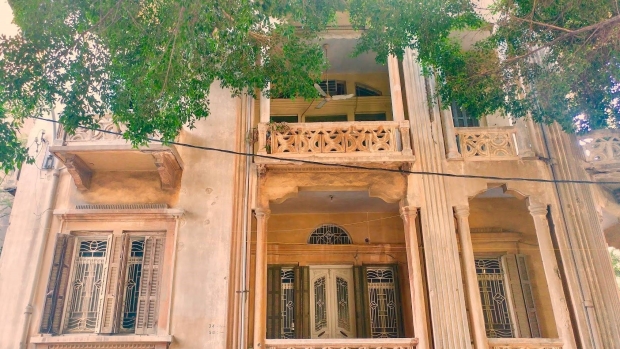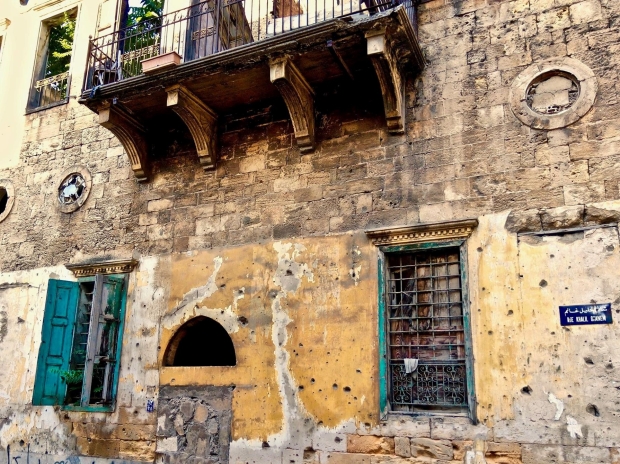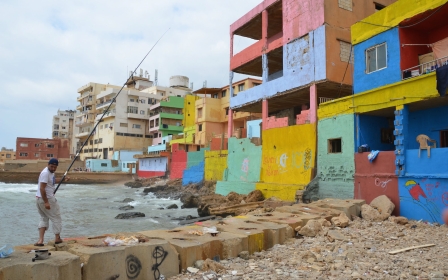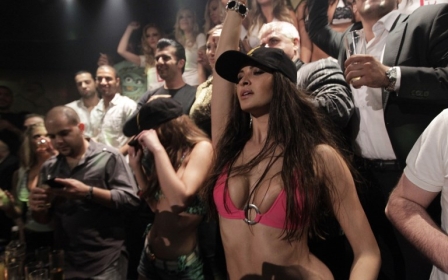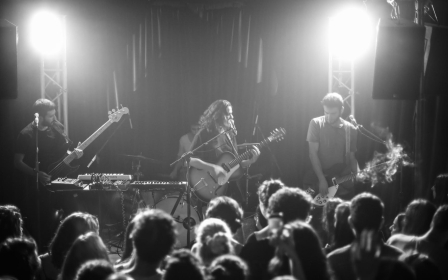From Paris of the Middle East to a depressing Hollywood film set: How gentrification changed Beirut
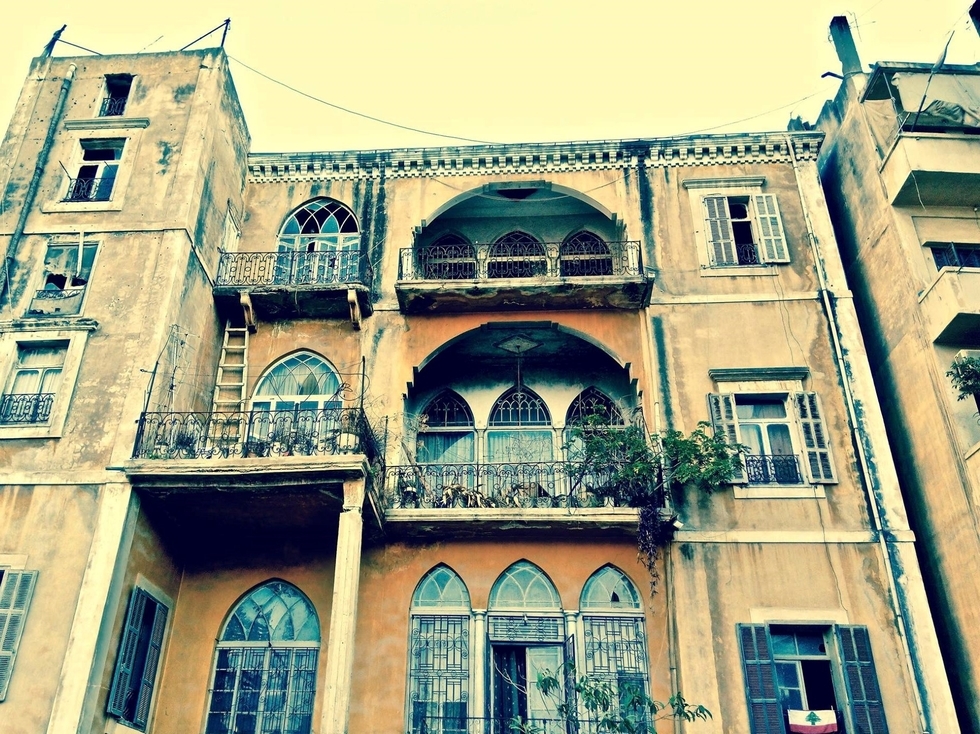
This month, Turkey’s Pegasus Airlines became the latest international entity to trip over itself in euphoric praise of Beirut - a metropolis that has already elicited much fanfare from everyone from the New York Times to Vogue to celebrity chef Anthony Bourdain.
Often, the fanfare revolves around Beirut's opportunities for shameless, high-end consumption and/or the pseudo-exotic panorama awaiting the Orientalist traveler in a multi-sectarian city in which hijabs and miniskirts magically coexist. (We also mustn’t forget VICE’s super-cool report on Beiruti "bars offer[ing] coke-fuelled benders down the street from Hezbollah headquarters".)
The rising phoenix!
In featuring the Lebanese capital as its destination of the month, the airlines magazine has opted for another overused trope: that of Beirut as a "city that has risen like a phoenix from the ashes" of the Lebanese civil war (1975-90) to reclaim its former glory as the "Paris of the Middle East".
Regarding postwar reconstruction efforts in the city centre, the magazine gushes: "With the strong attention from tourists and the many international brand-names it has attracted, the city's main shopping district has played an important role in keeping downtown Beirut alive both financially and culturally".
Entering downtown these days, one gets the sensation of being on some depressing Hollywood film set
Never mind that "alive" should not be the first word that comes to mind to describe a place that is economically and socially off-limits to the vast majority of a country's inhabitants. It is an aseptic space generally purged of any sign of community or culture beyond its monuments to obscene wealth: fantastically expensive apartment complexes, five-star hotels, luxury boutiques, and so forth.
Additional cultural flavour comes in the form of heavily armed security forces and a fluctuating arrangement of barricades and barbed wire.
In other words, Beirut’s renovated downtown hardly lives up to its marketed role as a forum for postwar reconciliation and reunification of the Lebanese nation - unless by "Lebanese nation" we happen to mean investors from the Gulf and other representatives of the global elite.
Exclusive spaces
The city centre in its current form is thanks - in large part - to the vision of former billionaire Lebanese Prime Minister Rafik Hariri, assassinated in 2005. Having amassed a great fortune in Saudi Arabia during the civil war in Lebanon, he returned home to spearhead the reconstruction of the Beirut Central District by Solidere, a private developer for which Hariri was both political enabler and largest shareholder.
In his 2014 PhD thesis, for the London School of Economics and Political Science, Hadi Makarem writes that Hariri’s "neoliberal agenda" and the creation downtown of "exclusive spaces of consumption" catering to the rich ultimately entailed “the expenditure of public resources on corruption and patron-client exchanges allow[ing] Hariri and his entourage to push forward special laws and decrees, which in turn, allowed them to appropriate as much rent as possible from the reconstruction effort".
Of course, the new circumstances offered plenty of exciting opportunities across the sectarian spectrum to make a buck off the system.
Incidentally, Makarem notes that the "neoliberal spatial reordering" of downtown Beirut had been a while in the making, with some test runs of sorts having been executed during lulls in civil war fighting when demolitions took place under the guise of cleanup operations - particularly following the brutal Israeli invasion of 1982 that killed some 20,000 people, mainly civilians.
Makarem quotes late Lebanese architect Assem Salam on how it was "ironic that the renewed episodes of fighting were what saved most of the buildings in downtown Beirut from destruction". When the war ended, overzealous "cleanup" work meant that - in the words of Salam - "more buildings were brought down by the demolition crews than by the civil war itself".
Entering downtown these days, one gets the sensation of being on some depressing Hollywood film set; the longer one is made to spend there, the more one begins to question humanity’s very purpose on earth.
Forced homogenisation
This past June, I participated in an urban political history tour of the downtown perimeter, organised as part of a conference at the American University of Beirut. The tour was led by Jana Yasmin Nakhal, Beirut-based urban planner and designer and a member of the Lebanese Communist Party, whose grandfather had prior to the civil war kept a humble flower shop in the city centre - the sort of establishment no longer possible thanks to the socioeconomic cleansing and forced homogenisation of downtown.
Of course, the predatory needs of capital didn't stop at downtown. Guiding us around its edges, Nakhal indicated the processes of gentrification already underway, which will eventually not only erase the city's architectural history - as majestic old buildings are toppled in favour of investment-friendly monstrosities - but also displace "unaesthetic" components of the cityscape such as its lower-income communities.
The majority of residents might see the rampant proliferation of multimillion-dollar real estate in downtown and beyond as something other than a phoenix rising from the ashes
Nakhal emphasised the cross-sectarian commitment to these processes, writing in a subsequent email to me that, while Lebanese political leaders and civil warlords "still use and cultivate a sectarian discourse" that effectively "sets members of the working class against one another based on confessional differences", the leaders themselves happen to "enjoy the best business relations" in real estate speculation and development, among other fields.
Indeed, nearly three decades after the end of the Lebanese civil war, sectarian elites continue to make a killing - at the literal expense of their constituents - off of policies that thwart societal cohesion. In a country where the poverty rate exceeds 60 percent in certain areas and basic services are in short supply, it goes without saying that the majority of residents might see the rampant proliferation of multimillion-dollar real estate in downtown and beyond as something other than a phoenix rising from the ashes.
Near the end of Nakhal’s tour, a passerby from war-afflicted Syria stopped to offer his opinion to the group that Damascus was a much nicer city than Beirut. And while the phoenix-rising crowd insists on singing the praises of the Lebanese capital's cosmopolitan trendiness and joie de vivre, the war in Beirut, it seems, is far from over.
- Belen Fernandez is the author of The Imperial Messenger: Thomas Friedman at Work, published by Verso. She is a contributing editor at Jacobin magazine.
The views expressed in this article belong to the author and do not necessarily reflect the editorial policy of Middle East Eye.
Photo: Majestic old buildings are toppled in favour of investment-friendly monstrosities (Photo: Belen Fernandez)
This article is available in French on Middle East Eye French edition.
Middle East Eye propose une couverture et une analyse indépendantes et incomparables du Moyen-Orient, de l’Afrique du Nord et d’autres régions du monde. Pour en savoir plus sur la reprise de ce contenu et les frais qui s’appliquent, veuillez remplir ce formulaire [en anglais]. Pour en savoir plus sur MEE, cliquez ici [en anglais].



